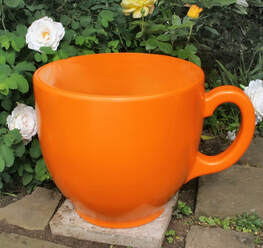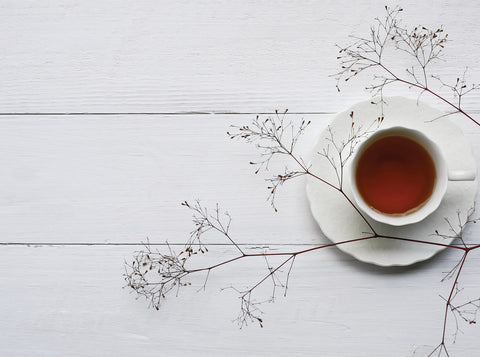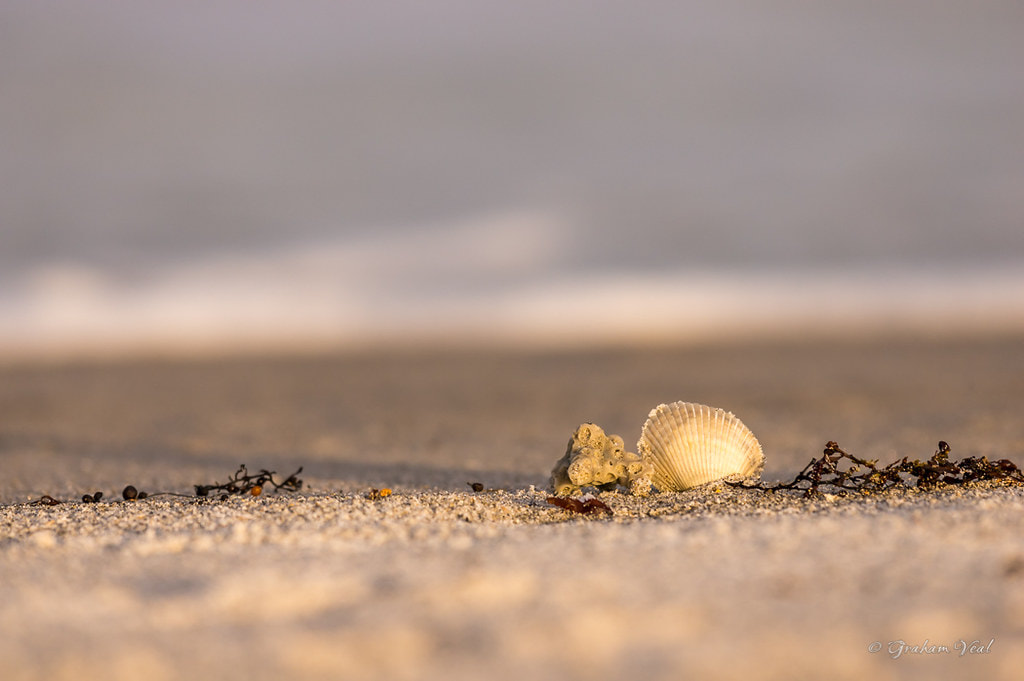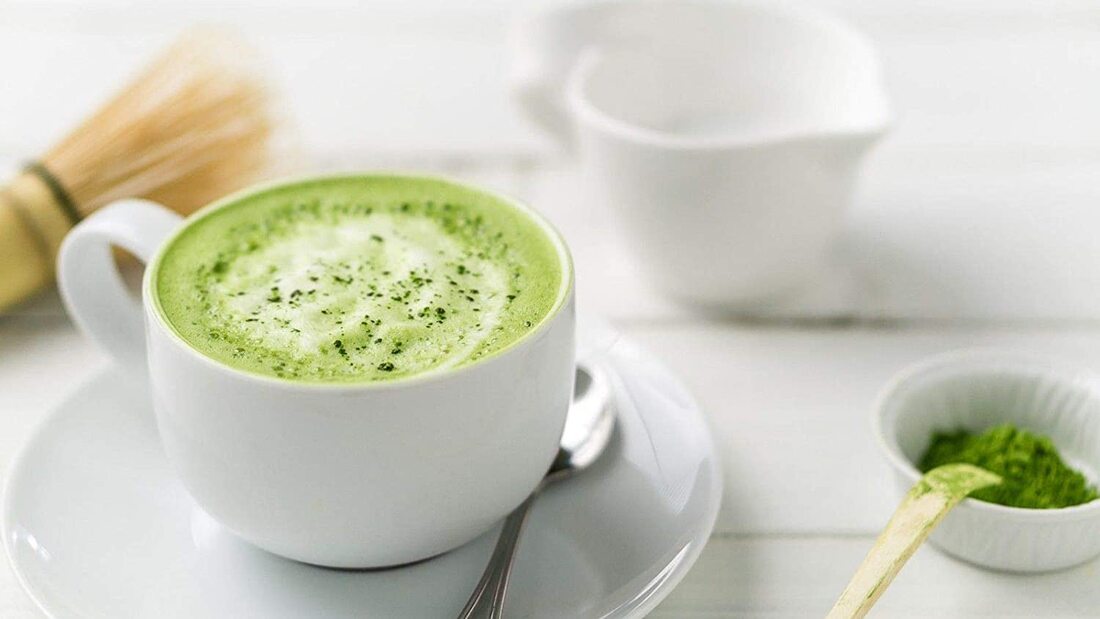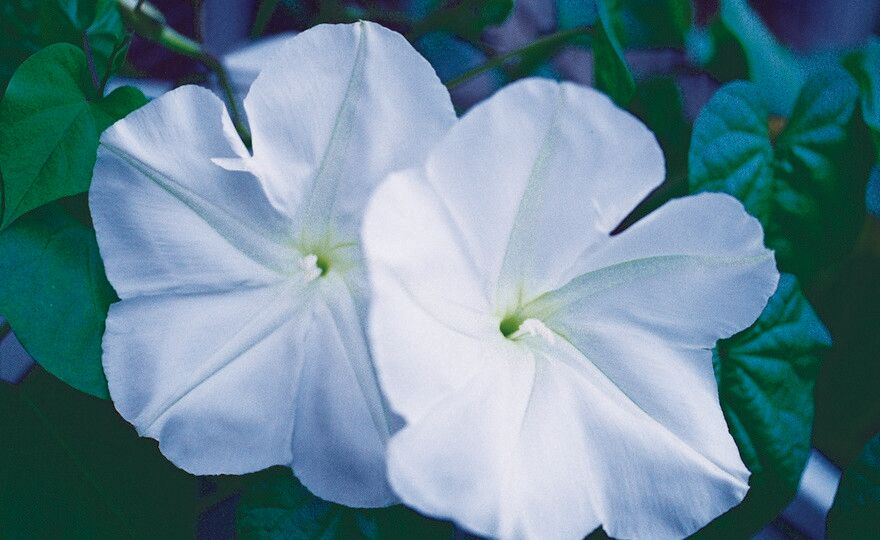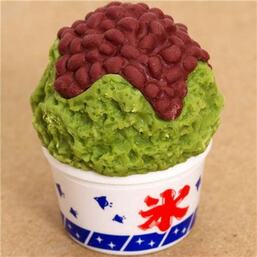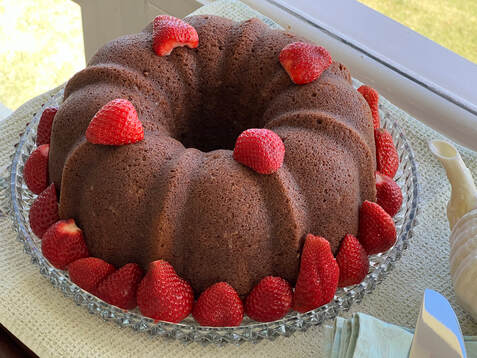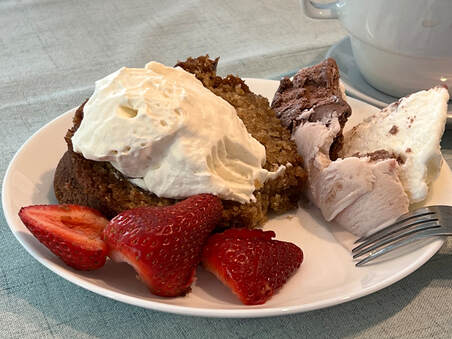|
|
In the March morning,
A cup of green tea; new leaves
Sway in the trade winds
|
March has arrived with fresh green leaves, blossoms, and birds chirping everywhere. Spring is here! It’s time to think about all those wonderful tea parties we hope to celebrate in this joyful season. And it’s always time to learn more about tea. Six years have gone by since Kathleen and I completed Sharing Tea: The Road Back to Civilization and created the website, myteaplanner.com, to showcase our book and our blogs, along with a wide range of additional tea-related information. Since then, tea culture world-wide has experienced an exciting renaissance. Tea production has increased world-wide, as has tea consumption. Economic studies estimate that the growth of the international tea market is expected at an annual rate of 5.5% from 2019 to 2025, and by that date tea is projected to become an annual 18.42-billion-dollar industry. China is the world leader in both tea production and consumption with India close behind.
|
A kite catches in
The Indian almond tree;
A leaf flutters down.
|
|
The expansion of tea production and tea consumption has brought a wider range of teas that are readily available along with a larger selection of equipment and tea kettles for brewing tea. The internet has become a treasure trove for finding every imaginable variety of tea or tea blend along with elegant teapots, cups and tea accoutrements. In addition, Tea Associations in the USA, Canada and the United Kingdom provide their members with information about the latest Tea Trends, offer courses and Tea Talks and keep up with governmental regulations of tea production and marketing. World Tea Media,
www.worldteaexpo.com is an international tea trade show and conference with tea-focused seminars, business education, tea tastings, and of course networking and making friends with other tea lovers.
|
|
Bergamot scents the
Cool March evening; tea glistens
In deep orange cups.
|
While these associations cater primarily to the trade, contemporary tea culture for ordinary tea lovers offers new and exciting adventures. In some ways, tea has taken on a role similar to wine among those who prefer the hot, non-alcoholic beverage. For example, today it is possible to be trained and certified as a “Tea Sommelier” and work in a restaurant or tea shop to recommend appropriate pairings of tea with various foods such as cheese or chocolate. And many tea shops now offer tea tastings modeled after the wine tastings hosted at wineries and restaurants. This allows guests to sample a variety of different teas and to learn more about the wide choice of tea blends and herbal tisanes that are now available.
|
Ruby-hued rooibos
Sparkles in a china cup;
The low tide rumbles.
|
|
The American magazine, Tea Time, is a great source for keeping up with all of these trends. This beautifully photographed magazine offers at least three Afternoon Tea menus in every issue, now including a “Tea Sommelier” section for every menu suggesting appropriate tea selections for each of the courses, scone, savory and sweet. Every issue also includes a “Tea Events Calendar,” highlighting special Afternoon Tea gatherings and tea-related celebrations and events in various locations throughout the United States. And the “Necessary Things” section of every issue features the latest new tea-related products such as linens, china, jams and preserves and gift sets including the newest tea blends and herbal teas.
|
|
After the flood, twigs
Litter the beach; the waves turn
Kona coffee brown.
|
And for those of you who, like me, are addicted to life-long learning about tea, there are plenty of books all about tea, cultural tea traditions and tea parties. I received the book Modern Tea: A Fresh Look at an Ancient Beverage by Lisa Boalt Richardson as a Christmas gift. I read it from cover to cover with delight and fascination. The author, who refers to herself as a “tea geek,” is especially interested in tea cultivation, harvesting, production and marketing. She has visited tea-growing fields throughout the world and has personally participated in hand-harvesting and processing tea leaves. She goes into extensive detail about the various types of green, oolong and black tea and how they are handled during production. This section of the book certainly answers the old question: Does green tea come from green leaves and black tea come from black leaves? The answer is, all tea comes from the same plant, Camellia sinensis, but black tea, which is far more popular throughout the world outside China and Japan, is made from leaves that have gone through an oxidation process, turning the leaves black.
|
Foamy green matcha
Swirls in a pure white cup; two
Java sparrows chirp.
|
|
Richardson’s book also includes chapters on buying, storing and brewing tea as well as pairing tea with various foods, cooking with tea and even making cocktails that contain tea. Her chapter on “Tea Ceremonies and Rituals” provides accurate information on the Chinese, Japanese, English, Moroccan, French and Russian tea rituals, but I would have found this section more satisfying if she had relied on actual tea masters from these various cultures rather than on Americans who have studied these subjects for many years. I prefer to go to the original sources whenever possible.
Modern Tea also includes information about the health aspects of tea and global issues such as Fair Trade and Ethical Tea Partnerships. And the “Resources” section at the end is a delightful list of tea shops and “reputable online resources” for buying tea and tea equipment. I can certainly recommend one of these resources, Le Palais des Thes, a French company that offers a splendid assortment of teas from all over the world to order on-line as well as multiple retail locations throughout Europe, Japan, Israel and the United States. Another wonderful Christmas gift I received recently was the fabulous Le Palais des Thes Advent Calendar that provided me with a different cup of outstanding tea every night leading up to Christmas.
Overall, I enjoyed reading Lisa Boalt Richardson’s Modern Tea. As a writer she has a friendly, self-deprecating voice and expresses a deep knowledge and genuine love of tea in all its myriad aspects. For used book lovers who prefer to focus more on the menu planning, food preparation and ambience of Afternoon Tea, my favorite is Teatime Celebrations by Patricia Gentry, a California-based college cooking instructor and member of the Southern California Culinary Guild and the International Association of Cooking Professionals. Gentry also has experience managing a tea-room, and the subtitle of her book, “Eighteen Menus for High Tea and Teatime Meals,” tells you everything you need to know about this wonderful, competently written treasure trove of tea menus and recipes. Kathleen and I both rely on Gentry for the accuracy and reliability of her recipes. In fact, the recipe for Cranberry Curd in my November, 2019 blog was inspired by Patricia Gentry’s recipe for Cranberry Curd Tarts.
|
|
In the still, starry
Night, a white gardenia blooms
Under the bright moon.
|
If you are up for more reading—all about tea, Kathleen and I invite you to take another look at “The Tea Book” section of this website. As women who love to host and attend Afternoon Tea gatherings, our intention was to cover every aspect of tea and the tea party experience. “The Tea Book” explores the history of tea in ancient China and the philosophic and aesthetic foundations of sharing tea in the Chinese and Japanese traditions. Our chapter on “The Philosophy of Tea” brings this historic foundation into contemporary life based on the tea traditions developed in England and other European countries centuries ago after the export of tea from Asia spread throughout the western world. For us, Afternoon Tea provides an opportunity for ethical and elevated interactions with other people of goodwill. Thus, “the Philosophy of Tea,” which encourages harmony, humility, respect and creativity brings these age-old values into ordinary life as we drink tea with friends as our best selves.
Our chapters on “Guidelines for the Host or Hostess” and “Guidelines for Guests” offer practical advice on the “etiquette” of tea and suggest ways to create beautiful, comfortable and welcoming settings in which to gather with friends. Other chapters in “The Tea Book” provide you with a detailed checklist for planning a tea party, a survey of tea utensils and equipment and a chapter including recipes for the most basic savories, scones, sweets and condiments that you will need to master the art of offering Afternoon Tea. “The Tea Book” also includes detailed menus and recipes for each of the four seasons, meticulously created by Kathleen based on her years of experience as a caterer, cooking teacher, wedding cake baker, chef and manager of a Bed and Breakfast Inn. Her gifts as a painter, photographer and flower arranger also inspire her vision for menus and table settings. Since spring has arrived and you may be thinking of inviting a few friends over for a small but elegant gathering, I highly recommend the Spring Tea, loaded with luscious savories and sweets that showcase the freshest spring vegetables, herbs and fruits. Our “Calendar of Tea Parties” takes you through the year and provides innovative menus and recipes for all the special holidays including of course a splendid Afternoon Tea menu for St. Patrick’s Day, which we will celebrate this month.
|
In March fog, a night
Heron lands on a junk in
Aberdeen Harbor.
|
|
As this haiku, written in Hong Kong, suggests, my favorite section of “The Tea Book” is “A World of Tea Parties,” a trip around the globe with menus and recipes from places where my husband and I have traveled and experienced Afternoon Tea based on local customs and traditions. We start in China where tea originated and move on to Portugal, the first European country to experience tea. Then we visit several other tea-loving countries, including England, France, Italy and Russia, before returning to the USA, where we feature regional menus from California and the American South.
Our “Tea Book” also anticipates special occasions, such as a home-made Wedding Reception Tea, a Vegan Tea or a Tea for Children, several of which include grocery lists and planning guides to help you attend to every detail of these memorable gatherings. We also provide our readers with a Resources section containing a detailed Bibliography, a Menu and Recipe Index, a list of recommended Commercial Food Products and a Glossary of Culinary Terms. Kathleen and I have tried to anticipate everything our readers need to know to create beautiful and unique tea parties in their own homes or gardens with their own friends and loved ones. We also remain open to new possibilities and options in the ever-changing and magical world of Afternoon Tea.
|
|
We eat kale flavored
Shave ice with azuki beans
On St. Patrick’s Day.
|
Brown Sugar Oatmeal Cake
For St. Patrick’s Day
For your St. Patrick’s Day celebration this year, whether it be a family dinner or Afternoon Tea, I offer an elegant and classic cake from Patricia Gentry’s
Teatime Celebrations. I have slightly adapted Patricia’s Orange-Glazed Oatmeal Cake to emphasize the Irish connection by suggesting an Irish Whiskey or Bailey’s Irish Cream glaze. This moist and hearty oatmeal cake can also be enjoyed for breakfast or even, as Patricia suggests, on camping or fishing trips, as it keeps and travels well. It is also a “cake for all seasons,” as the basic batter can be adapted for other seasonal holidays and celebrations. I include my suggestions for seasonal adaptations at the end of the recipe. For St. Patrick’s Day, serve this luscious cake with Irish Breakfast Tea.
For the Cake Batter:
- 2 ½ cups boiling water
- 2 cups quick-cooking oatmeal
- 1 cup unsalted butter softened (Use Irish Kerry gold if you can find it.)
- 1 cup firmly packed brown sugar
- 2 cups granulated sugar
- 4 large eggs
- 2 2/3 cups flour
- 1 teaspoon salt
- 2 teaspoons baking soda
- 2 teaspoons vanilla extract
- Cooking spray with flour for the pan
For the Soaking Glaze:
- ½ cup water
- 4 tablespoon granulated sugar
- 2-4 tablespoons Irish Whiskey, Bailey’s Irish Cream or Orange Liqueur such as Cointreau
- (If you prefer to avoid alcohol, use 4 tablespoons orange juice.)
For Garnish:
- 1 cup freshly whipped heavy cream lightly sweetened with 2 tablespoons powdered sugar and 1 teaspoon vanilla
- Fresh strawberries, hulled and sliced in two
Alternate Garnish:
- Freshly hulled whole strawberries
- Small bowl of sour cream
- Small flat bowl of brown sugar
Special equipment: extra-large mixing bowl, 2 medium sized mixing bowls, flour sifter or sieve, hand-held electric mixer, rubber spatula, 12-cup Bundt pan, decorative serving platter or cake pedestal, small attractive bowl for whipped cream, wire rack, medium saucepan or microwave-safe 1-quart glass measuring cup, wooden skewer
Serves: 12-16
Preheat oven to 350° F
- Preheat the oven and spray the Bundt pan with cooking spray with flour. Place the oatmeal in a medium bowl and pour the 2 ½ cups boiling water over. Set aside.
- In an extra-large bowl with a hand-held electric mixer, cream together the butter and sugars until light and fluffy, about 4 minutes. Add the eggs, 1 at a time and beat well after each addition. In a medium sized bowl, sift together the flour, salt and baking soda.
- Add the flour mixture, oatmeal and vanilla to the creamed butter mixture and mix thoroughly, but do not overmix.
- Turn the batter into the prepared pan and bake until a wooden skewer inserted into the middle comes out clean, about 70 minutes. (Start checking at 60 minutes, as oven temperatures and Bundt pans vary.) Cool the cake in the pan on a wire rack for 10 minutes.
- While the cake cools, combine the sugar and water for the glaze in a medium saucepan and bring it to a boil over medium-high heat, stirring to dissolve the sugar (or microwave the sugar and water in a glass measuring cup until boiling, remove and stir to dissolve all the sugar.) Add the whiskey, liqueur or orange juice for flavoring and stir to blend. Use 2-4 tablespoons of the flavoring liquid depending on how strong a flavor you prefer.
- Invert the cake onto a decorative platter or cake pedestal. Poke holes in the cake with a wooden skewer and slowly pour the soaking glaze over the cake. The glaze will disappear and become invisible. To serve, place fresh strawberry halves around the outside of the cake on the platter and offer freshly whipped cream on the side.
- For an alternate garnish which children love, place whole hulled strawberries in an attractive bowl near the cake platter with bowls of sour cream and brown sugar nearby. Let the guests dip their strawberries by hand into the sour cream, then into the brown sugar and eat the dipped strawberries along with the cake.
Seasonal Variations for Brown Sugar Oatmeal Cake:
The recipe above is a spring presentation.
Summer: Add kirsch or other cherry flavored brandy or cherry juice to the glaze. Serve with Fresh Cherry Sauce and Ben and Jerry’s Cherry Garcia Ice Cream or any other summer berries such as raspberries or blueberries and vanilla ice cream. Serve with iced Rooibos tea or hot Japanese green tea.
Autumn: Flavor the glaze with Calvados or apple juice. Serve with Home-Made Apple Butter (recipe in Rose’s November 2020 blog) and Dulce de Leche ice cream. Serve with a strong black tea such as Keemun or warm apple cider.
Winter: Flavor the glaze with rum, an orange liqueur such as Cointreau or Triple Sec, or orange juice. Add to the dry ingredients for the cake: 2 teaspoons ground cinnamon, 1 ½ teaspoon grated nutmeg and grated zest of 1 orange. Add to the batter, 1 cup raisins, dried cranberries or chopped candied orange peel or a combination of all three. Serve with hard sauce and cranberry curd or rum raisin ice cream and Earl Grey Tea.
